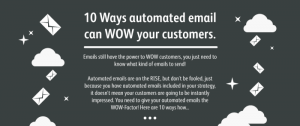Networking is and always has been an essential part of building a brand. Nowadays, it looks a little different than it has been. The main difference? A lot of it happens over email, especially now with the pandemic. That’s why I’m sharing with you my top networking tips that will help you to craft the best email and actually get results.
But first, let’s talk a little bit about what networking emails are … and what they’re not.
Networking Tips: What is a Networking Email?
This is not just a question about what it is, but what a networking email does for your personal brand and when to use it.
Now, let’s tackle the first question, what is a networking email?
In short, a networking note or email is a message you send to someone, either through email or a networking site like LinkedIn, in order to build a mutually beneficial relationship. It is not a way to ask for favors and go on your merry way. Networking is a two-way encounter and should also benefit the person you’re reaching out to.
How does it help you? Many professionals use these messages to advance their brand or career. You might send a message to someone in your industry to…
- Find a job
- Start a business
- Get advice / guidance
- Collaborate on a project
So now you know what a networking email is and how it helps you. But how do you write a networking email that hits all the right notes and gets results?
Also, stay tuned to the end, where we will look at a few examples of successful networking emails.
8 Networking Tips to Help You Write the Best Networking Email
1. Do Your Homework
Discover as much as you can about the person you want to email. Interests? Schools attended? Companies worked for?
During your research, note what you admire about the person. Then share one or two of those points in your note to personalize your email and show that you’renot just blasting out emails to everyone on your list.
Such details can really set your email apart from the others that land in someone’s inbox.
2. Spend Time on Your Subject Line
Your subject line is extremely important — it is, after all, the first thing people see in their inbox. So your subject line can make the difference between an open or a delete.
Make it concise yet engaging.
A helpful rule of thumb is to find something that will catch the person’s eye. You might mention something the person has done that you admire. Or you might use this space to mention a shared acquaintance or experience, such as being alums of the same school.
Here are a few subject line examples to inspire you…
Just a Fellow Alum of UCLA
Your Article About XYZ Changed My Life
A Friend of Amy Jones
3. Establish Common Ground
Before you reach out, seek activities, experience or passions you share. You might be advocates of a particular cause or have attended the same school. Whatever it is, use your email to highlight that similarity.
Such affinities build engagement and show that you’re not just another faceless entity who wants a favor. You might even come across as more familiar to them.
4. Build Trust
Remember, people are flooded with emails from advertisers and other people seeking something. Any email from a new person will spark suspicion today.
On the other hand, a great way to combat any initial hesitation is to share some details about yourself that distinguish you and build ease and trust.
What details can you use to establish trust?
For starters, share something about your professional background or training. Perhaps share what company you work for or an industry conference you attended. You don’t want to go on and on about yourself, but l weave specific details into your email that show you’re legit.
5. Offer to Help
A networking note or email should never be all about you and what you need.
Look for ways that you can help the other person. This could be through introducing them to someone else in the industry. You might share an article you thought would be interesting or an upcoming event.
Start by looking at what you can offer and what would help them. Then work that into your email.
6. Make It Easy for Them
If part of your request involves a phone or video conference meeting, then make this as seamless as possible.
Let them know upfront that you’re looking only for a small block of time, perhaps a 15 or 20 minute call — and stick to that once the meeting actually happens!
In your initial email, offer them a few choices of days and times. Check on what their time zone is and ensure the times you mention are in that time zone. Doing this can cut back on the annoying back-and-forth that usually accompanies meeting setups.
Don’t offer times that are the same day or next day. Instead, offer dates and times that are a few days or even a week out so the person will more likely have time available.
7. Start Out with an Easy Request
Nobody likes to get that email from a complete stranger asking for a favor.
And that might be what you need, a favor. But instead of making that the focus of your initial email, start out small. Ask for something that’s not going to take up a lot of time, such as advice or information.
This could be …
I look up to you and wondered if you had advice for someone becoming an entrepreneur.
or
I want to break into your industry, which has been a hobby of mine but I now want to get serious. Can you share a few pointers with me of how to do so?
Such small requests allow you to test the waters. It’s also a chance for them to get to know you and can be the initial building blocks for a relationship.
As time goes by and you do need a favor, it won’t come out of left field and they will likely be more willing to help you out.
8. Send a Follow-Up Email
Let’s face it, all of us get lost in the jungle of our inbox.
So, if the person you’re trying to reach takes a while to respond, it’s always a good idea to send a follow-up email.
It doesn’t have to be long or complicated. Jog his or her’s memory by mentioning when you sent your email and what it was about. It could be something like…
I just wanted to follow up about the email I sent you last Tuesday about XYZ. As I mentioned in my previous email, I’ve really admired your industry journey and would love the chance to connect.
A no-pressure follow-up email might be just the ticket to show your sincere interest.
Networking Email Examples: See These Networking Tips in Action
Let’s see all of these networking tips in action!
Here are a couple of examples that you can follow as you work on your own networking emails.
If you want to network with someone to collaborate on a project, you might write something like…
Dear Helena,
My name is ___________ and I am a marketing professional with over 25 years of experience in the PR and marketing industry. Last month, I really enjoyed your speech on Branding in the Digital Age at the XYZ Conference and thought I would reach out.
If you’d be open to it, I‘d love the opportunity to connect with you and chat about potential collaboration opportunities. I have opening next week on Monday or Tuesday between 2:00 and 5:00 PST. If you have 15 minutes to spare, I would love to see how we can help each other.
Warm Regards,
If you would like to network with someone about a job opportunity, you might write something like…
Dear Meg,
My name is __________ and I have worked in information technology for the past 20 years.
Last week, I read your article in Forbes about your experience and I greatly admire how you pivoted to a new career in your 40s and made it such a massive success. I have similar aspirations and would like to know if you have any advice for someone who is looking to break into a new career. If you have any time to connect and chat about your experience, I would be incredibly grateful.
Thank you for your time,
Final Thoughts on My Networking Tips
Remember, every email or message you write is going to be different — your goals will inevitably change and the person you address is bound to change your networking formula in some way.
The important things to remember are to do your research ahead of time and to think about the needs of the person whom you’re addressing. If you keep these in mind, a lot of the other things will fall into place automatically.
So there you have it — networking tips that will help you to craft the best networking note or email that actually gets results! Hope these tips help you to move your networking strategy forward!
Photo by Denis Degioanni on Unsplash
Digital & Social Articles on Business 2 Community(142)




